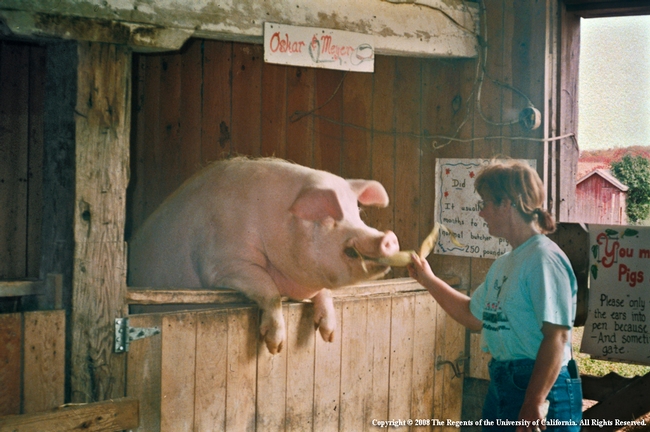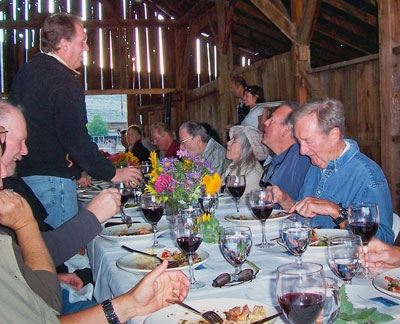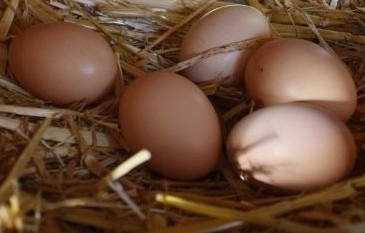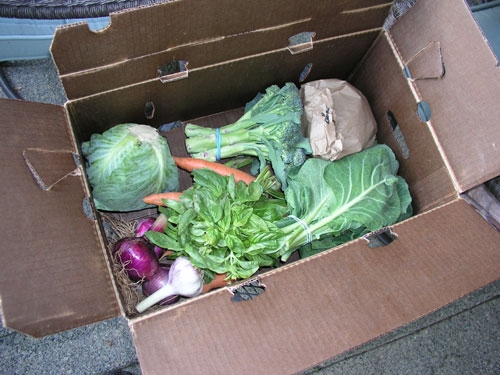Posts Tagged: Shermain Hardesty
Cottage food law not the answer to small-farm woes
The UC small farm program held a series of two-day workshops around California to outline the provisions of the new law. Shermain Hardesty, UC Cooperative Extension specialist, was the coordinator and an instructor for the series. The class was popular, but many of the farming participants found that the letter of the law tended to hinder their creativity rather than open new business avenues.
Hardesty said the Homemade Food Act (AB 1616) was designed to, among other things, help farming families take their surplus produce and make dried products, jams, jellies and butters. However, the California Department of Public Health is requiring cottage food operators to do all of their processing in their home kitchen, to comply with the Statutory Provisions Related to Sanitary and Preparation Requirements for Cottage Food Operations (Excerpts from the California Health and Safety (H&S Code, including H&S 113980 Requirements for Food), specifically, the CDPH requires that cottage food operators comply with the following operational requirements:
"All food contact surfaces, equipment, and utensils used for the preparation, packaging, or handling of any cottage food products shall be washed, rinsed, and sanitized before each use. All food preparation and food and equipment storage areas shall be maintained free of rodents and insects."
Cutting fruit and laying it in the sun to dry, for example, is not permitted. For jams and jellies, the law stipulates sugar-to-fruit ratios that require more sugar than fruit. For some cooks, the rules defeat the unique character of their homemade, gourmet products.
“I really try not to put a lot of sugar in my jellies. I want it to taste like fruit,” said farmer Annie Main, who took the UC class.
Main and her husband Jeff run an organic fruit, vegetable, flower and herb operation on 20 acres in the Capay Valley of Yolo County.
“I've been doing value-added for 20 years,” Main said. “In the '90s, I started making jams and jellies in a rented certified kitchen. But it's a trek to get labor, jars, supplies and fruit to the restaurant kitchen after hours and then work till midnight. We thought with the new law, I could do it in my own kitchen, which would be fabulous.”
However, she found that the rules of the law are so restrictive as to be prohibitive.
“Farmers in the class were asked whether the law extended their ability for economic return on their products. Every single one shook their heads,” Main said. “The new law doesn't help us at all.”
Hardesty said there may be other options for these producers to process and sell their foods. She is planning to offer another class this fall, “Cottage Food Plus,” to help growers find workable mechanisms for selling their food.
“They may be able to use a co-packer to do the processing or a commercial kitchen or become registered as a processing food facility,” Hardesty said.
Creativity helps small-scale farmers survive
To survive as a small-scale farmer, it may not be enough to merely grow food. With most people eating food grown by very large commercial agricultural enterprises, small farmers can attract sales with some creativity and a personal touch, reported Gosia Wozniacka of the Associated Press.
Farm operators generated $10 billion in 2007 from farm-related activities other than crop or livestock wholesale, an increase of nearly 80 percent from 2002, the article said.
For perspective on what is known as value-added agriculture, Wozniacka spoke to Shermain Hardesty, UC Cooperative Extension specialist in the Department of Agricultural and Resource Economics at UC Davis. Hardesty said value-added products are "a way to have a product to sell year-round, even during winter months."
Examples of value-added products are jams and jellies, farm stays, workshops and U-pick operations.
"It reinforces farmers' connection to consumers," Hardesty said. "And by getting involved in marketing their identities, they can expand their profitability."

Providing the public a 'farm experience' can help small-scale farmers stay afloat.
Media gets UC input for stories on unconventional farming
Reporters sought UC Cooperative Extension expertise for recent articles about unusual farming efforts in two parts of California.
Fresno Bee reporter Robert Rodriguez covered the story of sisters in their early 20s who have settled on their dad's Laton alfalfa farm after he suffered complications from a black widow bite. The young women purchased chickens on a whim and began producing specialty eggs under the brand name "Just Got Laid."
Rodriguez spoke to Shermain Hardesty, UCCE specialist in the Department of Agriculture and Resource Economics at UC Davis, about trends in cottage farming.
"The timing is right for operators who can make a connection with consumers," Hardesty said. "People will support that."
Sacramento Bee reporter Edward Ortiz wrote about a return to dry-land farming in the Central Valley, with examples of farmers opting out of irrigation in producing particularly tasty apricots, wine grapes and tomatoes.
UC experts, however, commented on the difficulties associated with dry-land production in the valley.
"Dry farming would be a hard life because you're at the whim of the rains," said Jay Lund, director of the Center for Watershed Sciences at UC Davis. "It would have to be a fairly small-scale farm, and in some cases, it would be a good road to poverty."
For the Modesto Bee version of the story, Roger Duncan, UC Cooperative Extension advisor in Stanislaus County, told the reporter dry-land farming doesn't appear to be catching on locally.
Duncan said wine grape growers might withhold irrigation early in the growing season to control leaf growth and improve fruit quality, but water is still needed later on. He noted that the valley in the 19th century was widely planted with wheat that relied on rainfall. The boom ended when irrigation allowed diverse fruits, vegetables and other crops to be grown.
Growers can find strength - and profit - in numbers
Multi-farm community-supported agriculture programs, cooperatives and pools under a common label are some ways small- to medium-sized operations can reach new customers interested in local produce, wrote Renee Stern in The Grower.
Together, growers can offer enough volume or range of crops to attract retailers, foodservice outlets or institutions that might be out of reach for each individual farm.
Stern included comments from a wide variety of experts in her article, including marketing professionals, small-scale farmers, a co-op manager and Shermain Hardesty, UC Cooperative Extension specialist at UC Davis with expertise in agricultural economics.
She told the reporter that someone — ideally one of the producers — needs to take charge of the collaborative marketing program, but finding someone with the time, aptitude and inclination may mean hiring a manager.
Do farm subsidies cause obesity?
Christopher Shea, Wall Street Journal
The link between agricultural subsidies and obesity is highly tenuous, according to a UC study that analyzed the effects of price supports on diet. The study, authored by Bradley Rickard, Abigail Okrent and Julian Alston, says if all subsidies were magically erased — including trade barriers — the typical American adult would actually respond by eating about 3,000 to 3,900 additional calories a year.
Alston is an agricultural economics professor at UC Davis, Richard is with Cornell, Okrent is a Ph.D. candidate at UC Davis.
Agritourism in agriculture's heartland
Thirty percent of the farmers offering agritourism events supplemented their regular farm income by $50,000 or more in 2008, according to a study by the UC small farm program that was covered on the front page of today's Fresno Bee. Nearly two-thirds of California agritourism operators planned to expand or diversify over the next five years.
"There is no question that there is a lot of potential for growth, and we are seeing it happen," the story quoted Shermain Hardesty, small farm program director and a co-author of the report.
In the article, reporter Robert Rodriguez described several Valley agritourism destinations:
- Visitors can stay the night on the 95-acre tree Dinuba farm of Nori and Mike Taylor.
- Farmer John Olivas lets people pick their own fruit and operates a fruit stand on his three-acre berry farm in Hanford.
- Fresno farmer Mike Smith will allow people to pick their own flowers, lavender and produce on his 40-acre organic farm. In the fall, he will operate a pumpkin patch for the public and school tours.
"We know from all the consumer trends that people are willing to pay for an authentic experience and for specialty foods," said Ellie Rilla, community development adviser for UC Cooperative Extension in Marin County and co-author of the study. "And agritourism provides that."
The research article, California agritourism operations and their economic potential are growing, was published in the current issue of California Agriculture journal.

Bringing in visitors for a dinner in a barn is one form of agritourism.



